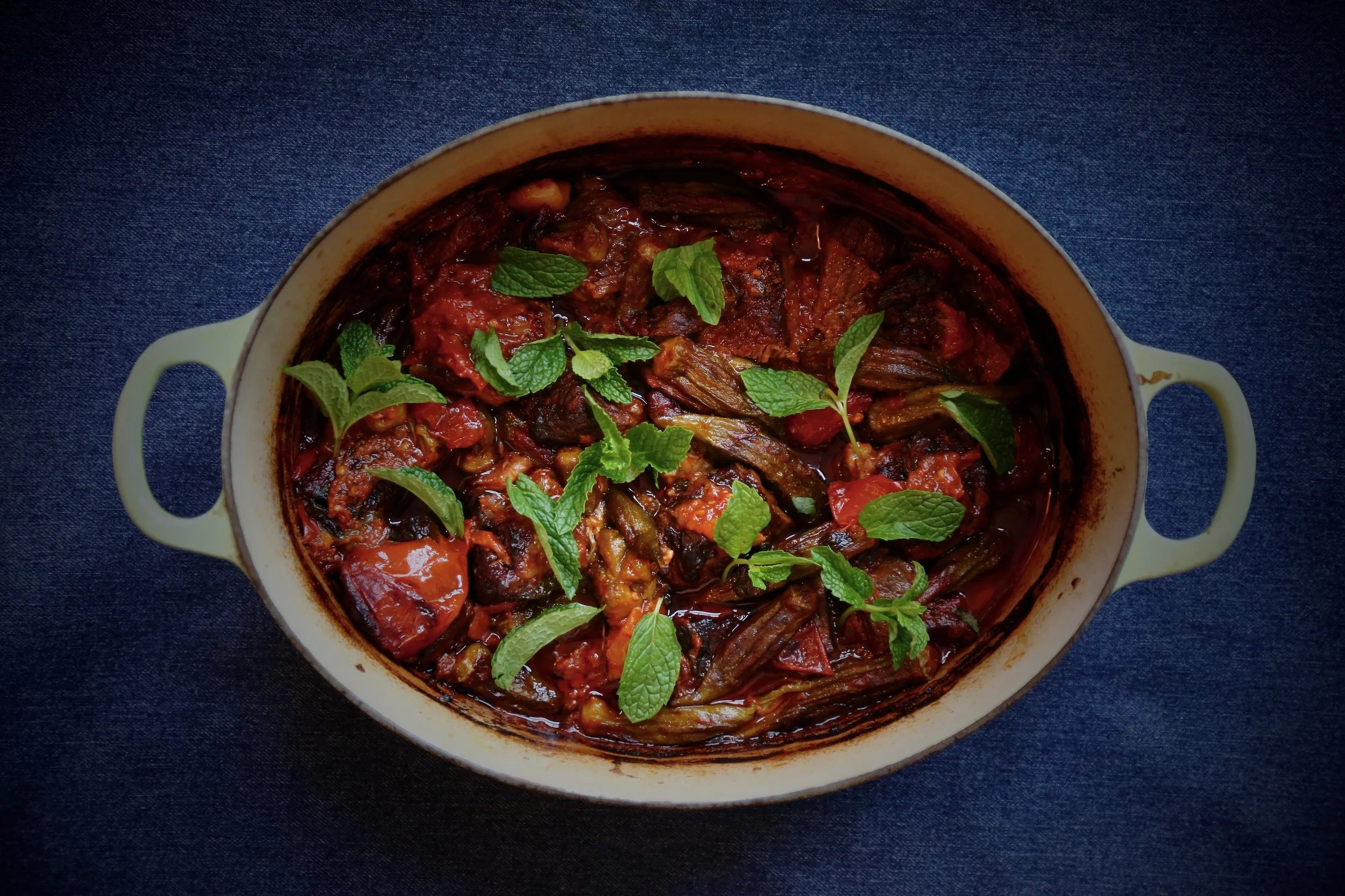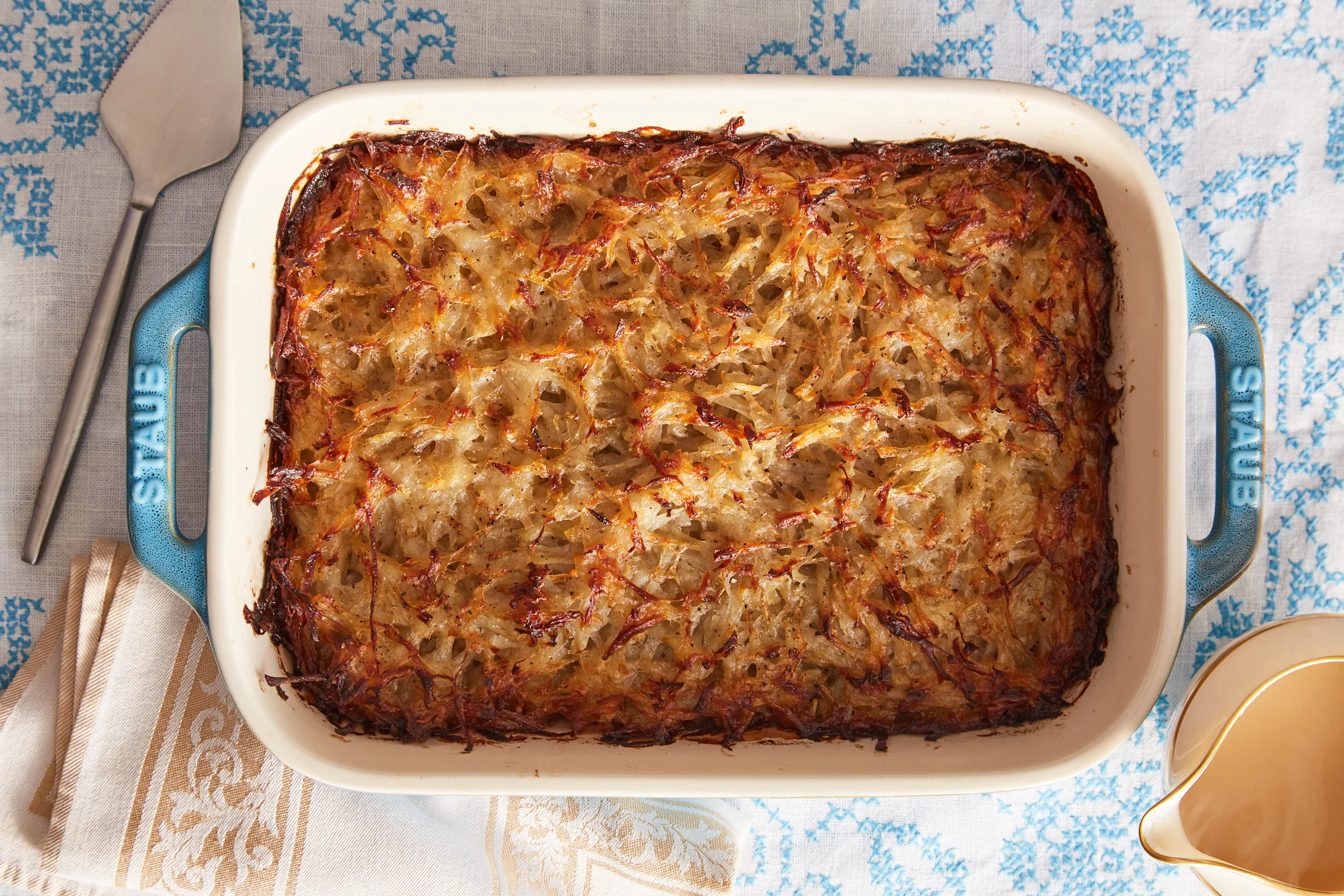From Egypt to Israel to London, Honey & Co.'s Beloved Breakfast Tradition
Shared by Sarit Packer and Itamar Srulovich
Recipe Roots: Alexandria, Egypt > Tel Aviv > London
When Itamar Srulovich was growing up in Jerusalem, meals at his grandmother Esther’s home in Tel Aviv leaned towards Yemen, where part of the family had emigrated from around the 1930s. She prepared hilbe, a Yemenite soup, slow braised beef called shawiya, and kubaneh, a rich and complex Yemenite bread.
But, when the Egytian side of the family would come over, Itamar explains, Esther’s menu would change. She would make dishes from Alexandria, where she grew up: small okra cooked in tomato sauce, mulukhiyah, a bitter green, and a traditional breakfast of cooked fava beans called fool. “We wouldn’t have it very often, but when we did it was… such a ceremony,” Itamar explained. It felt both special and fun. Everyone at the table would customize their bowl as they liked with onions and or tahini. Esther wasn’t the only family member to make the beloved breakfast dish. Itamar’s aunt Sima is a master of fool.
Itamar cannot remember the first time he made the dish — it’s long been part of his repertoire — but it was years before he and Sarit would become the owners of London’s celebrated Middle Eastern spots Honey & Co., Honey & Spice, and Honey & Smoke.
He brought the memory of the recipe with him when they moved to England, as they say, by “mistake.” They set out to travel and work in various kitchens around Europe, but fell in love with London and built a new home there. They found their way into kitchens captained by acclaimed chef Yotam Ottolenghi and ultimately set out to open their own restaurant.
“And when we did,” Sarit explains. “It was completely different than what we were looking for.” The duo had planned to open a grill house and to serve barbecue, but they opened in a small space and couldn’t afford to change much, so they started to cook what they call “home food.” “We had a home kitchen basically,” Itamar said. “It’s still a home kitchen,” Sarit prodded. There’s a four burner stove and seating for 25 people.
The division between their home and restaurant became porous, with dishes slipping back and forth between the two. At home, Sarit and Itamar made fool with lentils, which lightens the traditionally heavy dish. With a glut of lentils one day at the restaurant, they decided to try the recipe in the tiny kitchen. It quickly caught on not only with customers but with their staff some of whom have brought recipe into their own home. They shared the recipe with us from their latest book, fittingly titled: Honey & Co. at Home.
Honey & Co.'s Lentil Stew
Makes: 6 servings
Total time: 1 hour and 30 minutes
Ingredients
To cook the stew:
2 cups small dark green lentils
1 small red onion, peeled and finely diced
2 carrots, peeled and thinly sliced crosswise
2 celery stalks, peeled and thinly sliced crosswise
3 garlic cloves, peeled and halved
1 large plum tomato, quartered
1 small bunch of thyme, tied with butcher’s twine
1 bay leaf
4 tablespoons olive oil
To season the stew after cooking:
1 teaspoon salt
1 generous pinch of ground black pepper
1 tablespoon ground cumin
2 garlic cloves, peeled and crushed
Preparation
1. Place all the ingredients to cook the stew (except the olive oil) in a large and deep saucepan or pot.
2. Add 6 ½ cups of water and bring the pan to a boil. Skim any foam that may rise to the top.
3. Lower the heat to a simmer, add the olive oil and cook the ingredients for about 30 to 40 minutes until the lentils are soft.
4. Remove the stew from the heat and season with the salt, pepper, ground cumin and garlic. Set aside and allow to infuse for about 20 to 30 minutes. Remove the thyme and bay leaf.
5. Serve the stew hot, alongside charred eggplant, soft-boiled eggs, tahini and zehug.
Honey & Co.'s Zehug
Makes: 10 to 12 servings
Total time: 15 minutes
Ingredients
1 large bunch of cilantro, top leafy part only, washed well and finely chopped
1 serrano chili, finely chopped
1 small plum tomato, finely chopped
1 garlic clove, finely chopped
½ teaspoon salt
3 tablespoons olive oil, plus more to seal
Preparation
1. Place the cilantro, chili, tomato, garlic, salt and three tablespoons of oil in a medium sized bowl. Mix to combine well into a paste.
2. Serve the zehug at room temperature.
Cook’s Note: If you want to store the zehug, transfer to an airtight container and drizzle more oil to create a layer of oil that seals the zehug to prevent any discoloration. Store in the refrigerator for up to one week. You can alternatively freeze the zehug in small amounts in an ice cube tray and to use one cube at a time.
Honey & Co.'s Marunchinos
Photos by Penny De Los Santos
Sarit and Itamar shared this recipe for maruchinos with our archive as well. The recipe comes from the Sephardic community in Jerusalem who prepares them primarily around Passover. In London, Sarit and Itamar have updated them adding orange blossom and apricots. “There’s always a flourish to everything,” Sarit explains.
Makes: 16 cookies
Total Time: 2 hours and 30 minutes
Ingredients
2 ½ cups almond flour
1 ¾ cups confectioners sugar plus 1 more cup to coat the cookies
Zest of ½ lemon
1 heaping tablespoon orange blossom honey
3 ¼ ounces egg whites (about 3 eggs’ worth)
½ cup dried apricots, finely chopped
2 teaspoons orange blossom water
Preparation
1. Preheat oven to 400 degreees.
2. Line a baking tray with parchment paper. Place the almond flour and confectioners sugar in a large bowl and mix well. Add all the remaining ingredients (except 1 cup of confectioner’s sugar for coating). Mix to combine and create a smooth, fluffy and wet kind of dough. Cover and place in the refrigerator to cool for about 30 to 60 minutes until the dough is set.
3. Place the remaining 1 cup of confectioners sugar in a small bowl.
4. Remove from the refrigerator and tear a small piece of dough, about 1 ½ ounces. Shape the dough into a sphere and roll in the confectioners sugar to coat well. Place the coated ball onto the baking sheet and repeat with the remaining dough. Evenly space the cookies on the baking sheet.
5. Set the baking sheet aside for 1 to 2 hours. This will dry out the dough and form a bit of a crust on the cookies.
6. Transfer the baking sheet to the oven and bake for 8 minutes. Rotate the tray and bake for another 2 to 3 minutes until the cookies are very slightly golden.
7. Cool the cookies and serve at room temperature.
Cook’s Note: Store the cookies in an airtight container at room temperature for up to one week.












